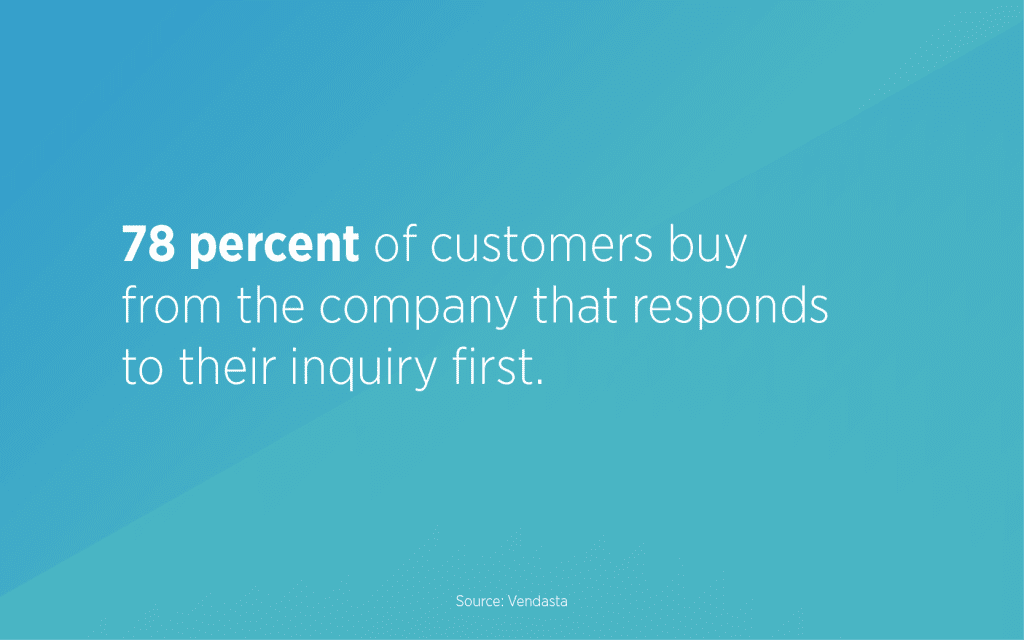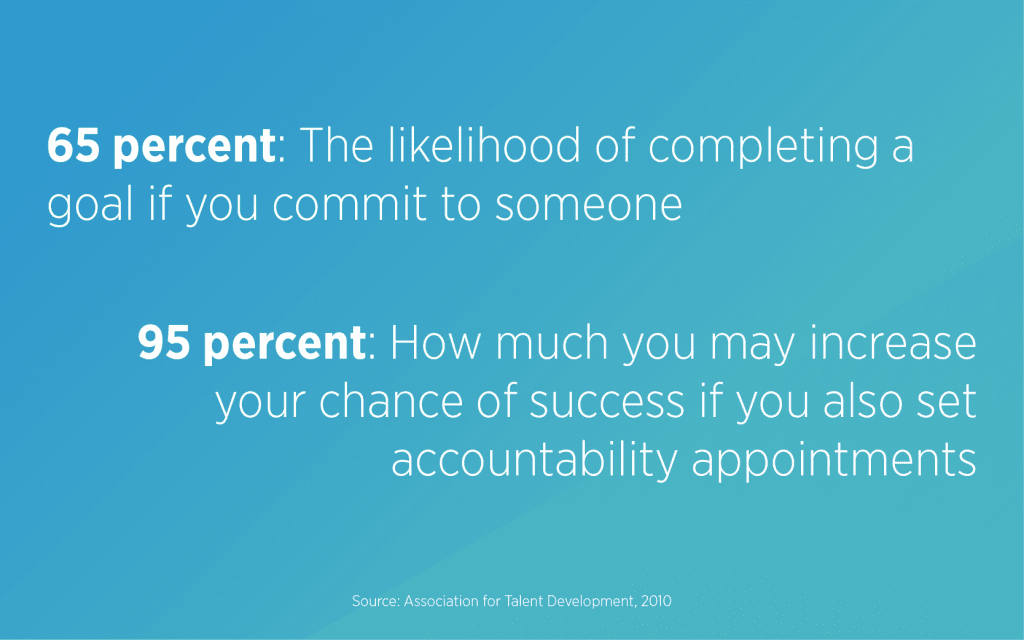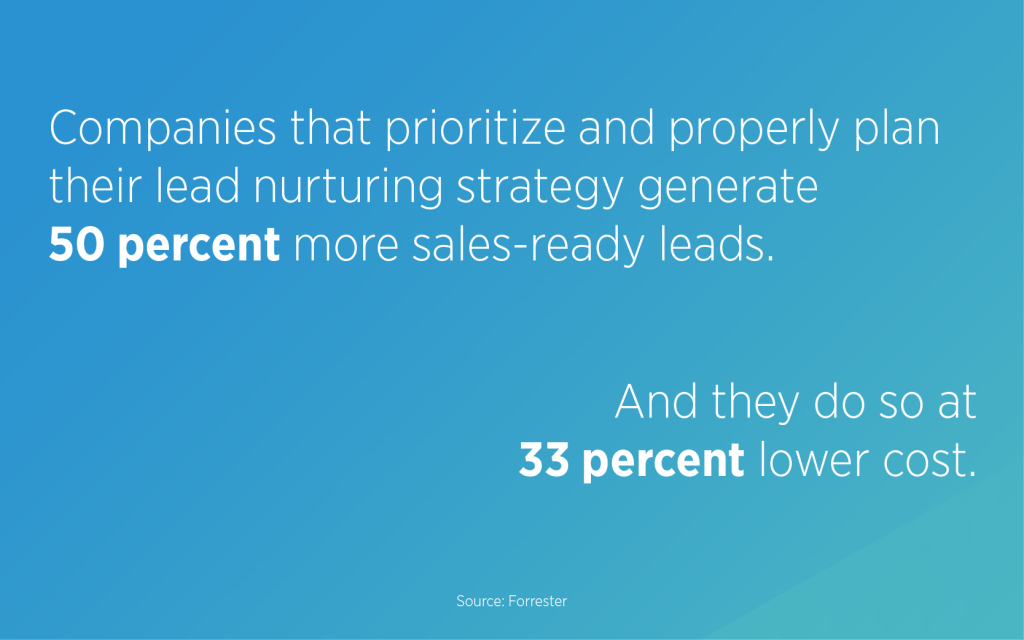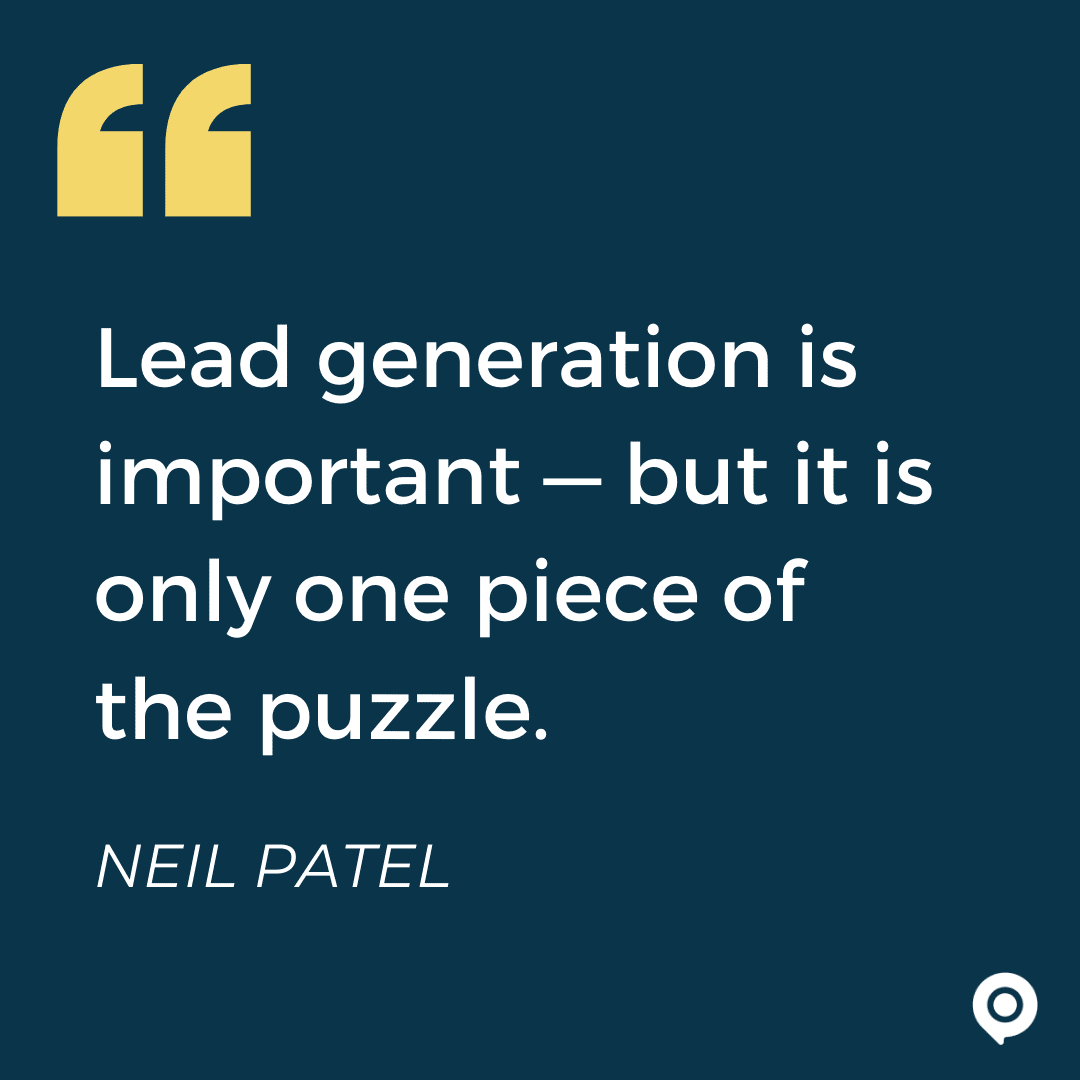
According to a study by Marketing Sherpa, 73% of leads are not ready to buy when they first give you their contact details. So how do you get them ready? You create and optimize your lead nurturing strategy.
Most businesses nurture leads through a series of automated emails. However, we all know email open rates continue dropping, and this strategy proves less and less effective. This means we need to rethink our current lead nurturing campaign. To really make an impact, a business needs texting. It’s by far the most powerful method of lead nurturing available.
The specific messaging of lead nurturing campaigns varies from business to business. A single business usually even needs multiple lead nurturing campaigns. But the goal remains the same: to guide a customer through the buyer’s journey and get them ready to make a purchasing decision by offering consistent and relevant value.
When done right, you end up with an educated and qualified lead, which means you’re more likely to close and make a sale.
So how do you make sure it goes right? First, let’s review four basic milestones of lead nurturing. Then we’ll talk about the components of successful lead nurturing campaigns to help you figure out where your business needs to improve.
Lead Nurturing Milestones
To kick off the lead nurturing process, contact people quickly. Then, through each of the four stages of the sales funnel, follow up with relevant, personalized information.
Awareness
Provide value focused on concepts related to your offering. At this point, a prospective customer is unlikely ready to make a decision. It’s not the time to include a strong call to action. Instead, focus on problems and pain points customers may be experiencing.
Interest
Once a customer shows interest in doing business with you, you need to gain their trust and prove to them your credibility. This may include sharing customer testimonials or otherwise positioning yourself as a “thought leader.”
Consideration
After you accurately target a prospective customer’s pain points and build trust and credibility, they should be ready to consider making a purchase. This is the perfect time to introduce products and solutions, with a soft call to action.
Purchase
Finally, follow up with a strong call to action.
Seems simple enough, right? As you figure out the nurturing process for your business, the execution may prove more difficult…
When you nail down your lead nurturing, you shorten the sales cycle and give your team even more time to sell and close. Research by InsideSales.com showed that reps spend nearly 65% of their time on tasks unrelated to generating revenue.
Obviously not every moment at work can be spent making money, but considering a rep’s main responsibility is to bring in customers and generate revenue, they should spend as much time as possible doing just that. With better executed lead nurturing, you help ensure their time is spent on what matters.
How to Optimize Your Lead Nurturing
For businesses that don’t already properly nurture leads, improving in one of these areas could have a huge impact on the number of leads they qualify. Master them all and perfect your timing and you’ll have great lead nurturing and a better chance of closing more sales.
Contact leads quickly
The best lead nurturing starts with quick follow-up. Not only do most people buy from the company that responds first, the chance of converting a lead significantly increases the faster you reach out.

Lead conversions are 391% higher if you reach out within a minute of an inquiry. If you wait an hour, conversion drops to 36% (Velocify). This is why texting makes for the perfect lead nurturing tool.
Keep messages relevant
Don’t send leads messages about whatever you think they may want to hear about. Know why they called, emailed, chatted, or filled out a form. What do they want from your business? Use that information to customize your follow-up and lead nurturing.
For example, describing all of your products and services to a new lead is not “awareness.” That’s lazy nurturing.
Yes, this may seem obvious, but how many times have you received irrelevant information from a business when all you really wanted was to learn about one specific thing? Probably too often to count.
Even as the business expert if you realize a different product or service may be a better fit for someone, you first have to learn what they want so you can direct the nurturing process accordingly.
Relevant messages help build the necessary trust and credibility that turn a lead into a customer.
Always follow up
Without proper follow-up, all lead nurturing fails, no matter the stage of the buyer’s journey a lead may be in.
So don’t let people go un-contacted for too long. Now, that doesn’t mean sending someone messages every day after they initially show interest. (Again, seems obvious, but how often do you receive a smothering of emails from businesses after providing just a little information?) But you still want to stay top of mind. Here’s what you can do to improve your follow-up:
- Answer any questions in a timely manner: Don’t leave people hanging.
- Listen and understand what people are saying before responding: Don’t assume too much.
- Provide leads with supporting information about the things they actually want to know about: Remember those relevant messages from the last section?)
- Send reminders: Once you commit someone to an appointment or meeting, help ensure they show up.

Regularly following up prevents you from accumulating too many dead leads. It’s also through continual follow-up that you and the lead both learn if they’re actually a good fit for your business/product/service. And if they’re not, that’s okay! At least you found out before a rep tried to sell to them.
Poor follow-up is a huge reason businesses fail at lead nurturing. If you struggle with proper follow-up, look at ways to implement marketing automation.
Be personal
People are more likely to choose your business if you engage in real and authentic conversations. Yes, you want them to do something for you (buy a product, sign up for a membership, hire you for a service, etc.), but every message should not be a direct attempt to sell something.
Content
Personalization goes beyond using someone’s first name, though you should do that when appropriate. It involves listening to people’s problems or pain points and using that to direct the conversation. Give people information specifically relevant to their interests and talk with them to determine if something else might be a better fit.
Language
While marketing automation should be a part of a businesses process, no one wants to receive messages from robots when they should be receiving messages from people. We all know the annoyance of receiving a short code message with stilted and overhyped language. That means focusing your tone and consciously developing messages that reflect the voice of your business as well as the voice of the person sending the messages.
According to DemandGen, using personalized content to nurture leads results in 20 percent higher conversion rates.
Focusing on the personal touch helps you increase overall engagement, which results in more qualified leads that hopefully lead to more conversions.
Personalization matters so much that 57% of consumers are willing to share their personal information if that gives them personalized offers. —Salesforce
Be flexible
Proper lead nurturing ensures you aren’t spending time selling to unqualified leads. But it still may not be the right time for someone to become a customer. This happens for a number of reasons. But if you’ve done a good job in the early stages of prepping and nurturing a lead, you could still be their choice when it is time to buy.
If you made a good impression initially and continued to follow up periodically, that could be just what someone needs to make a decision when it is the golden time to buy. Just make sure you keep track of leads that never converted who could still qualify as a future customer.
Proper lead nurturing also ensures you convert the current “golden lead” into a sale.

Your goal should be to maximize the speed at which you nurture leads as well as the process for qualification. But just remember that it doesn’t matter how fast your lead nurturing process goes if the result isn’t a highly qualified lead.
As obvious as some of this may sound, it really is the little things done right that yields big results. If you take nothing else away, know that you and your team and your business are not above lead nurturing and crafting a process that works for your target audience. And when you carefully optimize the lead nurturing process, your business thrives.


